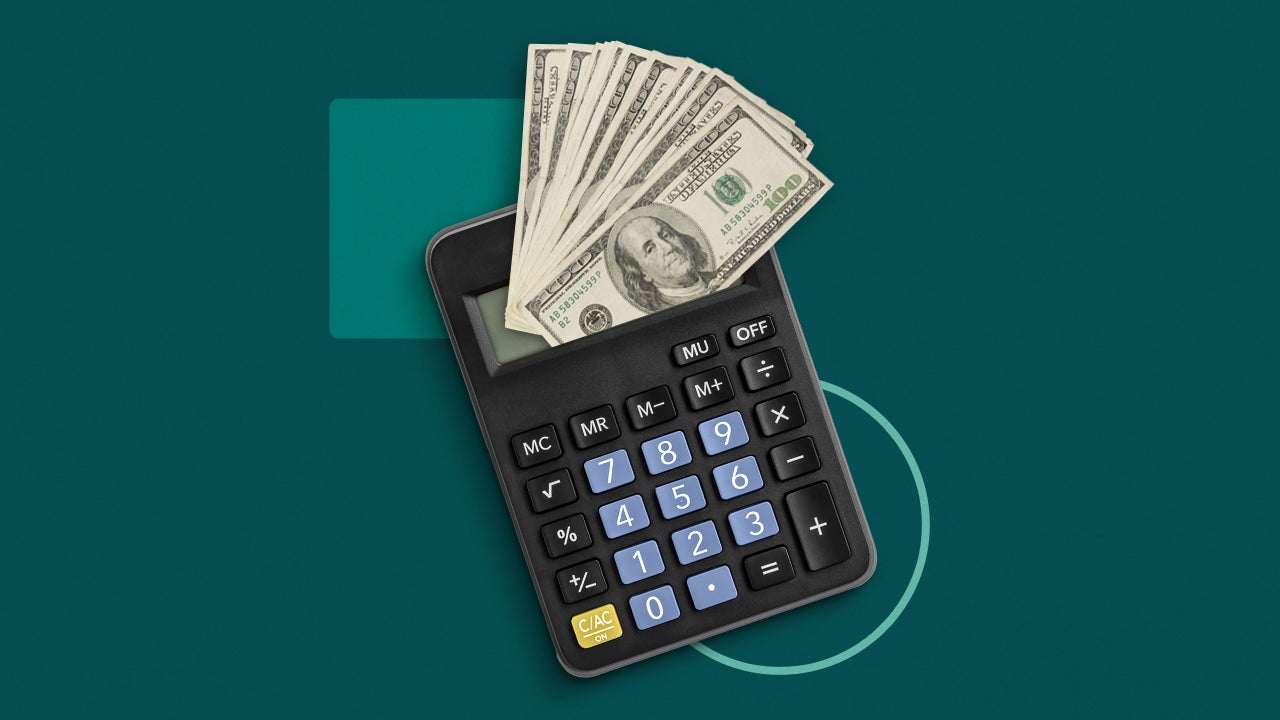How to calculate your debt-to-income ratio, and why it matters




Key takeaways
- To calculate your debt-to-income ratio, add up your monthly debt payments and divide this figure by your gross monthly income.
- While every lender and product will have different ranges, a DTI of 50 percent or more is considered high by most companies. Aim for 36 percent or less.
- Your DTI greatly impacts your ability to get approved for a loan.
Managing a low debt-to-income ratio (DTI) is crucial for securing loans and maintaining financial stability. Your DTI is the percentage of your monthly income that goes toward your debt payments, and this number gives lenders an idea of your ability to afford loan repayment. A high DTI can make getting approved for a loan difficult, while a low DTI can improve your chances of being approved for favorable loan terms.
What is a debt-to-income ratio?
Your debt-to-income ratio (DTI) is your total monthly debt obligations divided by your total pre-tax monthly income. This number, expressed as a percentage, helps lenders determine whether you have enough room in your budget for loan repayment and can influence your approval.
The higher your DTI, the more debt you have compared to your income, which signals to lenders that you may struggle to cover debts and other expenses. The lower your DTI, the more lenders see you as more likely to pay as agreed.
There are two types of DTI ratios lenders commonly consider:
- Front-end DTI: Also called the “housing ratio,” this number only considers monthly mortgage debts, including principal, interest, taxes and insurance. If you’re shopping for a mortgage, your front-end ratio is important.
- Back-end DTI: To calculate this figure, you’ll consider all debt obligations, including auto loans, student loans and minimum credit card payments. Your back-end DTI, also called the total debt ratio, is important when applying for any credit product.
How to calculate your debt-to-income ratio
Sure, you can use a debt-to-income ratio calculator to determine your number, but it’s relatively simple to calculate it for yourself.
Step one: Add up your monthly debts
Start by adding up all the debts listed on your credit report, including payments toward:
- Auto loans
- Child support and alimony
- Credit card monthly minimums
- Home equity loans
- Home equity lines of credit
- Mortgages
- Personal lines of credit
- Personal loans
- Store cards
- Student loans
- Timeshares
In addition to your personal debts, you should also include any joint accounts or co-signed loans.
Use your monthly payment for fixed-rate loans like personal loans and auto loans. For variable-rate accounts like credit cards and home equity lines of credit, use your minimum monthly payment.
Calculate the full PITI for your mortgage: principal, interest, taxes and insurance. This will be your regular monthly payment if you escrow your taxes and insurance. If you don’t escrow, your lender will likely take your annual tax and insurance payments, divide them by 12, and include them as part of your mortgage payment for your DTI calculation.
Monthly debts example
- Mortgage: $1,600
- Auto loan: $300
- Minimum credit card payments: $300
- Student loan: $200
Total monthly debts: $2,400
Step two: Add up your monthly gross income
Add up your monthly gross income, or the amount you earn before taxes are withheld. This should include wages from traditional jobs and any gig or freelance work you do. However, you don’t need to include payments like alimony or child support unless you want that to be considered by the lender.
If you’re a W-2 employee, this documentation will likely come from your W-2 form or your last several pay stubs. If you’re self-employed or have income from a side hustle, your lender will likely want to look at your business tax returns and 1099 forms.
Money earned from a side hustle that isn’t documented on a tax return may not be eligible for consideration as part of your DTI calculation. However, some lenders may accept bank statements that show regular deposits.
If you have rental properties, you should also include them in your income. The mortgage payments on your rental properties are included as part of your monthly debts. However, many lenders only allow you to count 75 percent of the monthly rent toward your income to allow a buffer for maintenance and vacancies.
Income example
- Monthly gross income from day job: $5,000
- Side hustle monthly gross income: $1,000
Total monthly gross income: $6,000
Step three: Divide your monthly debts by your monthly gross income
Finally, you’ll take your total monthly debt and divide it by your total monthly income. To see this number as a percentage, multiply it by 100.
Monthly debt payments: $2,400
Gross monthly income: $6,000
$2,400 / $6,000 = 0.40
0.40 x 100 = 40% DTI
Why your debt-to-income ratio matters
The higher your DTI, the riskier you appear to lenders. Lenders have different DTI standards you must meet to qualify for a loan. Here’s a closer look at what these percentages mean:
- Under 36 percent: Most lenders consider DTIs below 36 percent to be ideal. You shouldn’t face challenges getting approved for funding, assuming you meet the other lending guidelines.
- 36 percent to 41 percent: You could get approved with a DTI in this range, but you may not receive a large loan amount.
- 42 percent to 50 percent: Lenders may be hesitant to extend funding to you, as an additional debt payment could stretch your budget too thin. This higher risk of default may translate to fewer loan approvals or higher interest rates.
- Over 50 percent: Getting approved for a loan could be challenging with most lenders.
The requirements differ for each lender and the type of loan you take out, so read the minimum requirements and eligibility criteria carefully before applying. For example, the lender’s maximum DTI for a mortgage might not be the same as its maximum DTI for a personal loan, so research the lender’s eligibility distinctions and understand where your DTI lands.
How to lower your DTI
If your DTI is on the higher end, there are two primary ways to address it:
- Pay down debt: Lower the balances on your revolving debt (like credit cards) to reduce your minimum payments, which is what lenders consider when computing your DTI. Paying down debt will also improve your credit utilization ratio, potentially giving your credit score a boost.
- Increase your income: Perhaps easier said than done, but increasing your earnings will benefit your DTI ratio. Consider taking on more hours at work, asking for a raise or finding a side hustle.
Bottom line
Lenders take your debt-to-income ratio seriously. Along with your credit score, it’s one of the primary eligibility requirements for loans and other forms of credit. If your DTI is above 50 percent, you’ll struggle to get approved, so take steps to lower your DTI before taking on any new debt.
Frequently asked questions
Why we ask for feedback Your feedback helps us improve our content and services. It takes less than a minute to complete.
Your responses are anonymous and will only be used for improving our website.
You may also like

When and how to refinance a personal loan

How to calculate interest on a loan

How to calculate loan payments and costs

